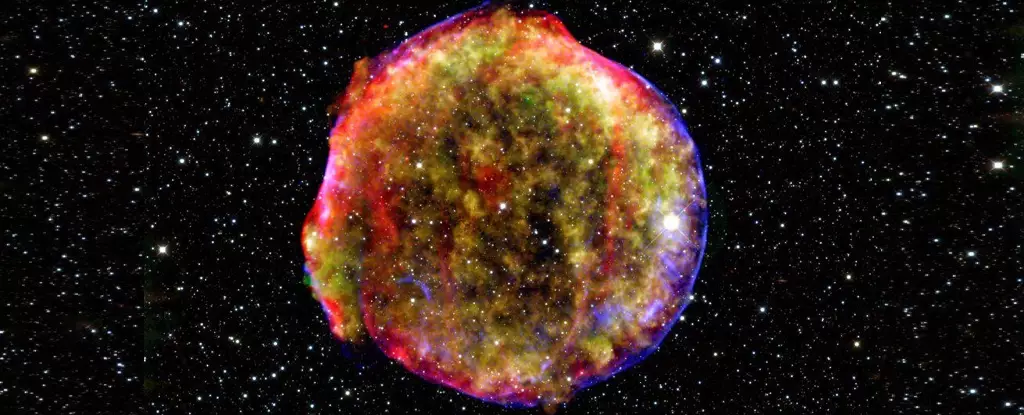In the grand tapestry of our universe, few phenomena stir the imagination and pique human curiosity quite like cosmic rays—those enigmatic streams of atomic fragments that bombard Earth with a frequency that flirts with the sublime. For over a century, scientists have scoured the cosmos, grappling for clues about the origins of these high-energy particles. But as our understanding deepens, the reality is far from straightforward. The prevailing wisdom often casts supernovae as the cosmological engines capable of flinging these particles into the depths of space, yet doubts linger like shadows over their capability to serve as PeVatrons.
Recent numerical simulations undertaken by a collaborative international team of physicists could reignite the supernova theory, proposing that the tumultuous collapse of massive stars could indeed create conditions ripe for particle acceleration. This conjecture challenges the current paradigm, raising questions about the nature of cosmic extremes and the fundamental processes that propel our universe’s most elusive phenomena.
Tycho’s Star: A Historical Lens
Tycho’s Star, a supernova that ignited the skies in 1572, serves as a fascinating case study in this cosmic exploration. It graced the firmament with its brightness, startling astronomers of the time, and marking an event that is now understood as the fiery demise of a white dwarf. As scientists drill down into historical astronomical records, Tycho’s epic farewell reveals a violent transformation driven by gravitational collapse and thermonuclear reactions. The resulting shockwaves are theorized to compress surrounding gas and generate complex magnetic fields.
Nonetheless, recent analyses have unveiled an array of surprises. Researchers concluded that the magnetic turbulence generated from such an event might be “significantly smaller” than previous models predicted, putting into question the potency of supernovae as cosmic accelerators. While this does not definitively eliminate the role of dying stars in cosmic ray production, it hints at a critical truth: the universe may operate in layers of complexity we are only beginning to fathom.
The Duplicitous Dance of PeVatrons
The notion of PeVatrons emerges as a groundbreaking concept within the astrophysical community. These cosmic engines are believed to catalyze the monstrous atomic collisions responsible for generating peta-electronvolt energies—unimaginably powerful by human standards. Some might suspect these forces are mere figments of theoretical imagination, yet researchers assert that the crux of this mystery may very well lie in the symbiotic relationship between dying stars and the dense materials they eject prior to their violent endings.
Astrophysicists such as Robert Brose, Iurii Sushch, and Jonathan Mackey have posited a timing-centric framework for understanding these interactions. For a supernova to function as an effective accelerator, its surrounding shell must reach a critical density at just the right moment. If the stars are fortunate, their cataclysmic deaths could provide the necessary environment for nuclei and electrons to surge toward PeV energies. This insight is thrilling yet daunting, as it holds the potential to upend our understanding while simultaneously revealing the fragility of cosmic events.
The Quest for Cosmic Truth
Perhaps the most provocative aspect of this unfolding narrative is the tantalizing possibility that our cosmic neighborhood might still have secrets waiting to be unveiled. Imagining a distant supernova erupting nearby fills one with a mix of dread and anticipation. Could it be the moment when Earth witnesses the birth of cosmic rays of extraordinary proportions? The researchers suggest that if only Tycho’s star had lingered, its breathtaking display might have provided the data needed to elevate our understanding of particle physics.
But therein lies the crux of the discussion: as we probe these profound questions, we must grapple with the limitations of our technology and the mysteries that still elude us. The challenge of unraveling the nature of PeVatrons and their relationship with supernovae could define the next chapter in astrophysics. The cosmos is a vivid canvas, and within its chaotic artistry lies an intricate connection, waiting for humanities’ explorers to dive in and discover the ultimate truth.
The quest for unraveling cosmic secrets will undoubtedly continue to tug at the heartstrings of scientists and enthusiasts alike, forging paths unknown in an ever-expanding universe of infinite wonder.

